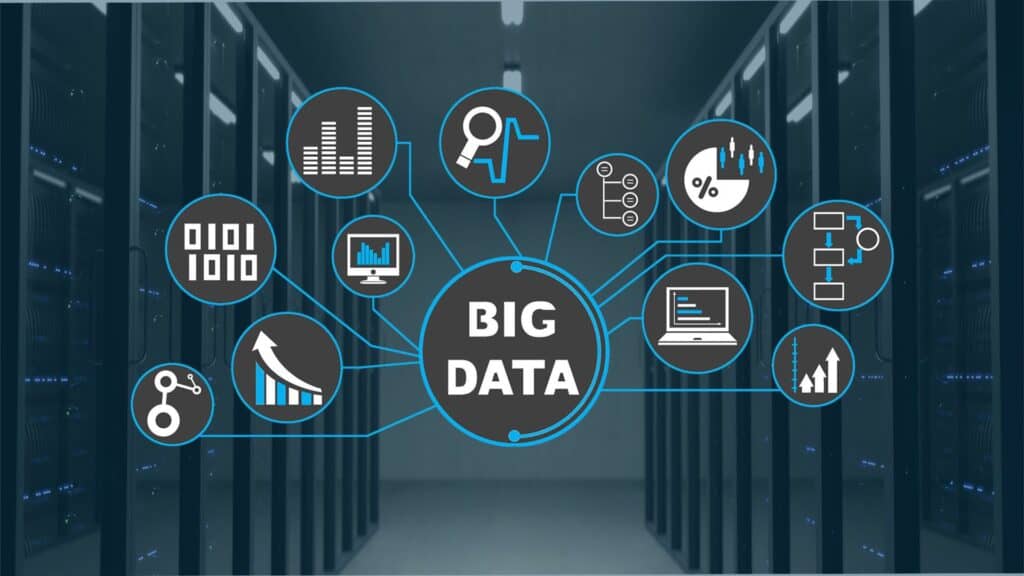Python and Big Data: Managing and Analyzing Large Datasets in 2023
Introduction
In the ever-evolving world of technology and data, the field of big data has gained immense prominence. As businesses gather massive amounts of data every day, the need for powerful tools and languages to manage and analyze this data has become paramount. Python, as a versatile and user-friendly programming language, has emerged as a go-to choice for data scientists and analysts to tackle the challenges of handling large datasets. In this article, we will explore how Python is transforming the landscape of big data management and analysis in 2023.
The Significance of Big Data in 2023
In the digital age, the volume of data being generated has reached unprecedented levels. Businesses across various industries are inundated with vast datasets that hold valuable insights. Whether it’s customer behavior, market trends, or operational efficiency, analyzing big data has become crucial for gaining a competitive edge.
The Challenges of Dealing with Big Data
As the volume of data increases, traditional data processing tools struggle to keep up. The challenges include data storage, data processing speed, and the ability to perform complex analytical tasks on large datasets.
Python: The Swiss Army Knife for Big Data
Why Python is Ideal for Big Data
Python has gained immense popularity due to its simplicity, readability, and extensive library support. It offers an array of tools that make handling big data more efficient and effective.
Python Libraries for Big Data
Python boasts powerful libraries such as Pandas, NumPy, Dask, and PySpark, which are specifically designed to handle large datasets. These libraries provide robust data structures and algorithms, making data manipulation and analysis seamless.
Scalability and Performance
Python’s ability to scale both vertically and horizontally makes it suitable for managing big data. Moreover, with the right optimization techniques, Python’s performance is considerably enhanced.
Leveraging Python for Big Data Management
Data Cleaning and Preprocessing
Before diving into data analysis, it is crucial to clean and preprocess the data. Python’s Pandas library provides extensive functionalities for data cleaning, handling missing values, and data transformation.
Data Visualization
Python’s Matplotlib and Seaborn libraries allow data scientists to create compelling visualizations. These visual representations enable easier comprehension of complex patterns within large datasets.
Machine Learning with Python
Machine learning plays a pivotal role in extracting valuable insights from big data. Python’s Scikit-learn library empowers data scientists to build sophisticated machine learning models and make data-driven predictions.
Analyzing Big Data with Python
Exploratory Data Analysis (EDA)
Python facilitates exploratory data analysis by providing a range of statistical functions and visualization tools. EDA helps in understanding the underlying patterns and relationships within the data.
Natural Language Processing (NLP)
In 2023, NLP has become vital for understanding unstructured textual data. Python’s NLTK and SpaCy libraries offer powerful NLP capabilities, making it easier to analyze large volumes of text data.
Sentiment Analysis
Python’s NLTK, along with machine learning algorithms, enables sentiment analysis on vast amounts of textual data, which is particularly valuable for businesses to gauge customer sentiment and feedback.
Real-World Applications
E-commerce and Personalization
Python-driven big data solutions help e-commerce businesses in understanding customer preferences and delivering personalized recommendations, ultimately improving the customer experience.
Healthcare and Predictive Analysis
In the healthcare industry, Python assists in analyzing large datasets to predict disease outbreaks, patient trends, and treatment outcomes, leading to more effective decision-making.
Financial Data Analysis
Python’s Pandas and NumPy libraries find extensive use in the finance sector to perform real-time data analysis, risk assessment, and fraud detection.
Conclusion
As we venture into 2023, the significance of big data continues to grow exponentially. Python emerges as the ultimate weapon in the arsenal of data scientists and analysts. With its extensive library support, scalability, and ease of use, Python empowers businesses to manage and analyze large datasets effectively. By leveraging Python’s capabilities, organizations can unlock valuable insights, drive data-driven decisions, and stay ahead in the competitive landscape of the digital era.
FAQs
Q1. Is Python the best programming language for big data analysis?
A1. Python is considered one of the best programming languages for big data analysis due to its versatility, extensive library support, and ease of use.
Q2. Can Python handle real-time BD processing?
A2. Yes, with the right optimization techniques and appropriate libraries, Python can handle real-time big data processing efficiently.
Q3. What role does machine learning play in big data analysis with Python?
A3. Machine learning algorithms it can help in uncovering patterns and trends within large datasets, enabling predictive analysis and data-driven decision-making.
Q4. Is Python suitable for processing unstructured data?
A4. Absolutely! Python, with libraries like NLTK and SpaCy, excels in processing and analyzing unstructured data, such as text and natural language.
Q5. How does Python contribute to business growth through BD analysis?
A5. Python’s ability to handle and analyze large datasets allows businesses to gain valuable insights, optimize processes, and deliver enhanced customer experiences, ultimately leading to business growth.





